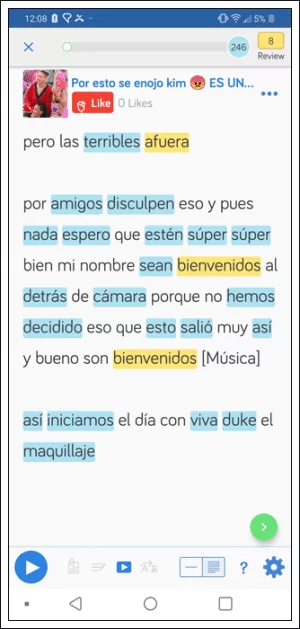Understanding Spanish Terms of Endearment
Amorcito! My love!
We all know that Spanish speakers are more effervescent in their communications than those in English-speaking cultures. We also all know that they are more passionate and loving in how they speak. This means that they are more emotionally direct, more affectionate with their words, and more willing to use Spanish terms of endearment between friends, family and even colleagues.
To get to grips with this, and to fit right in to any Hispanic culture you find yourself in, it really helps to build familiarity with terms that are often used in friendly conversation.
Common Spanish Terms of Endearment
“Amor” (Love)“Linda/o” (Pretty)
“Bonita/o” (Beautiful)
“Amiga/o” (Friend)
“Compañera/o” (Companion/Comrade)
“Compadre/Comadre” (Buddy)
When you meet up with or call friends it is common to start a conversation with a term of endearment. Likewise, when parting ways it is usual to end with an affectionate word after a farewell phrase, like; “Hasta luego linda!” (See you soon babe!)
Others like “Corazón” (My heart), can be used in exclamation or when conversing with an intimate connection. “Mi corazón, que quieres hacer hoy?” (My heart, what do you want to do today?).

Similarly, the following terms of endearment can also be used:
“Reina/Rey” (Queen/King)
“Pajarito” (Little bird)
“Cariño” (Darling)
However, especially in South America, these terms are not only used for your nearest and dearest. As I often experienced, new acquaintances will be very friendly and speak with affectionate terms almost immediately. In other circumstances, you can be in the market buying some fruit and vegetables and the store keeper will often ask what you want using such Spanish terms of endearment.
“Mi reina, que quieres?”
(My queen, what do you want?)
“Bonita, que te doy?”
(Beauty, what do I give you?)
You know what’s full of terms like these? Spanish dramas! Good thing you can import your favourite Spanish dramas from Netflix to make a lesson on LingQ. Just install the LingQ browser extension (available for Chrome, Firefox and Safari), find the episode you would like to turn into a lesson and click “Import”. So easy! Here’s a video tutorial to make it even easier.

Using the diminutive
Anyone who has spent any time in South America or Spain will have heard words being used in the diminutive form. This is when: – ita / – ito is added on the end according to the gender of the words. It is taken to mean that something is small, or it is used to signify a more affectionate form of talking about whatever is being referred to.
For example:
“Tomamos un tecito” (te = tecito)
Let’s have a tea.

“Dame un abracito” (abrazo = abracito)
Give me a hug.
“Feliz cumpleaños cariñito!” (cariño = cariñito)
Happy birthday darling!
“Ven acá mi hijita” (hija = hijita)
Come here my daughter.
“Mi corazoncito!”
My little heart!
When referring to close connections, the diminutive form will often be chosen by the speaker to communicate their closeness and love for the individual they are referring to. In this case it could be: “Abuelita/o” (Grandmama/Grandpapa), Hermanita/o (Sister/Brother), Amiguita (Friend).
As I became more confident in Spanish, I started to use these terms myself, realizing how different it was from Anglo-Saxon communication. I became a lot more confident and freer with the use of Spanish terms of endearment, and in doing so I developed into a much more authentic speaker and was able to build deeper connections with those people and friends around me.
In mimicking Hispanic patterns of speaking I learnt to love the (sometimes) over-the-top affectionate flairs in daily interactions. Then I upped my terms of endearment and understood their joyful place in everyday communication. Eventually it became a natural way for me to express my feelings, and easy enough to do with simple language flourishes like the diminutive.
Learn Spanish Faster Using LingQ
Immersing yourself in Spanish doesn’t require you to travel abroad or sign up for an expensive language program.
However, it can be a bit tiresome to find interesting content, go back and forth between sites, use different dictionaries to look up words, and so on.
That’s why there’s LingQ, the fastest way to learn Spanish online!. A language app that helps you discover and learn from content you love.

You can import videos, podcasts, and much more and turn them into interactive lessons.
Keep all your favorite Spanish content stored in one place, easily look up new words, save vocabulary, and review. Check out our guide to importing content into LingQ for more information.
LingQ is available for desktop as well as Android and iOS. Gain access to thousands of hours of audio and transcripts and begin your journey to fluency today.
Enjoyed this post? Check out polyglot and LingQ cofounder Steve Kaufmann’s blog post for some tips for learning Spanish!


